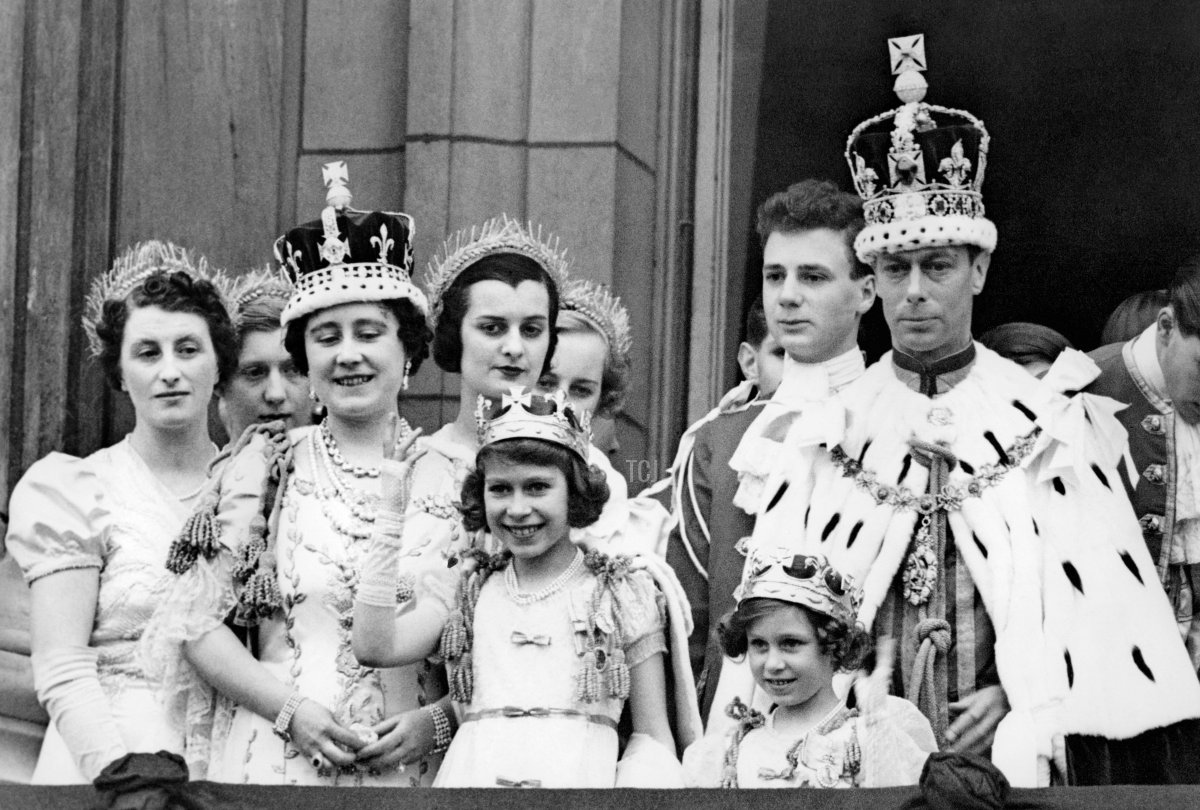
This year is the centenary of the marriage of King George VI and Lady Elizabeth Bowes-Lyon—more on that next week!—and today, we’ve got a closer look at the jewels she wore on the second most important day of her married life: the day that she and her husband were crowned at Westminster Abbey in 1937.
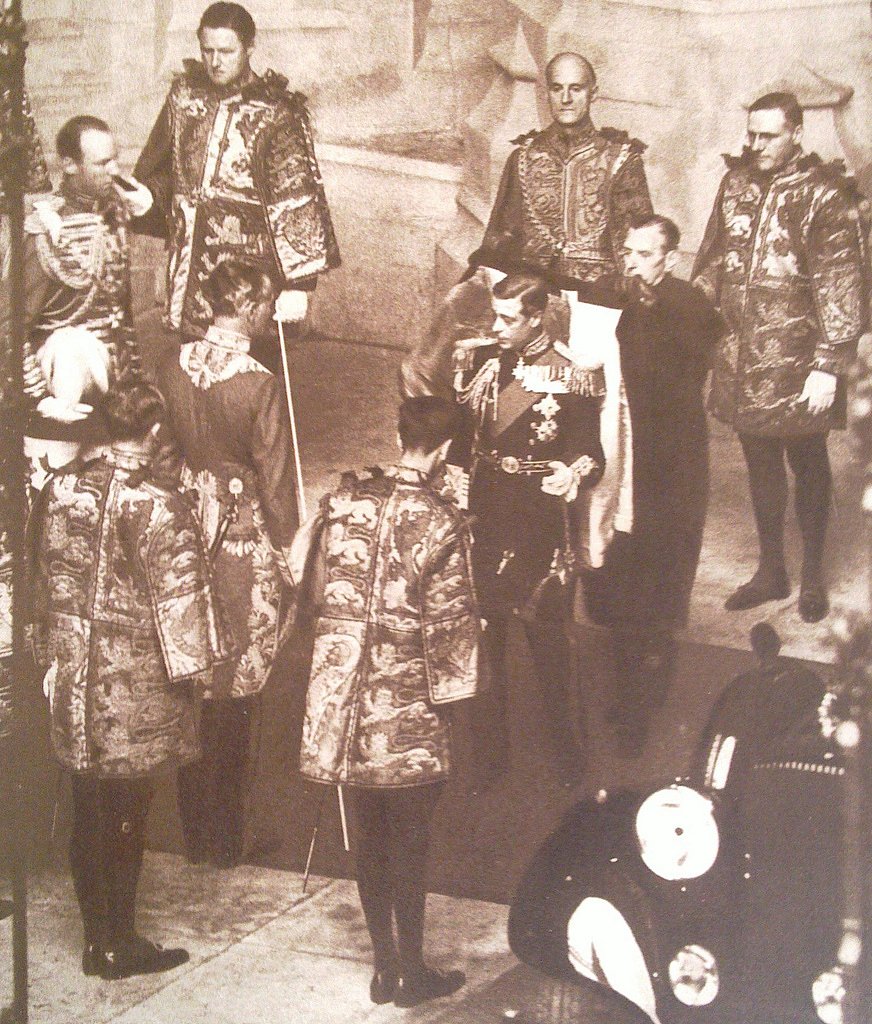
It was a coronation that wasn’t really supposed to happen—or, more accurately, that was supposed to happen to someone else. King Edward VIII ascended to the throne on the death of his father, King George V, on January 20, 1936. His coronation was scheduled for the following spring, on May 12, 1937. A committee gathered to plan the ceremony, but Edward was largely uninterested in the details, missing meetings to vacation with his lover, Wallis Simpson, and even asking the Archbishop of Canterbury, Cosmo Lang, if he really had to be crowned at all. While the King was sunning on a yacht with Wallis, his younger brother, the Duke of York, sat in on coronation meetings in his place. It turned out to be a prophetic swap.
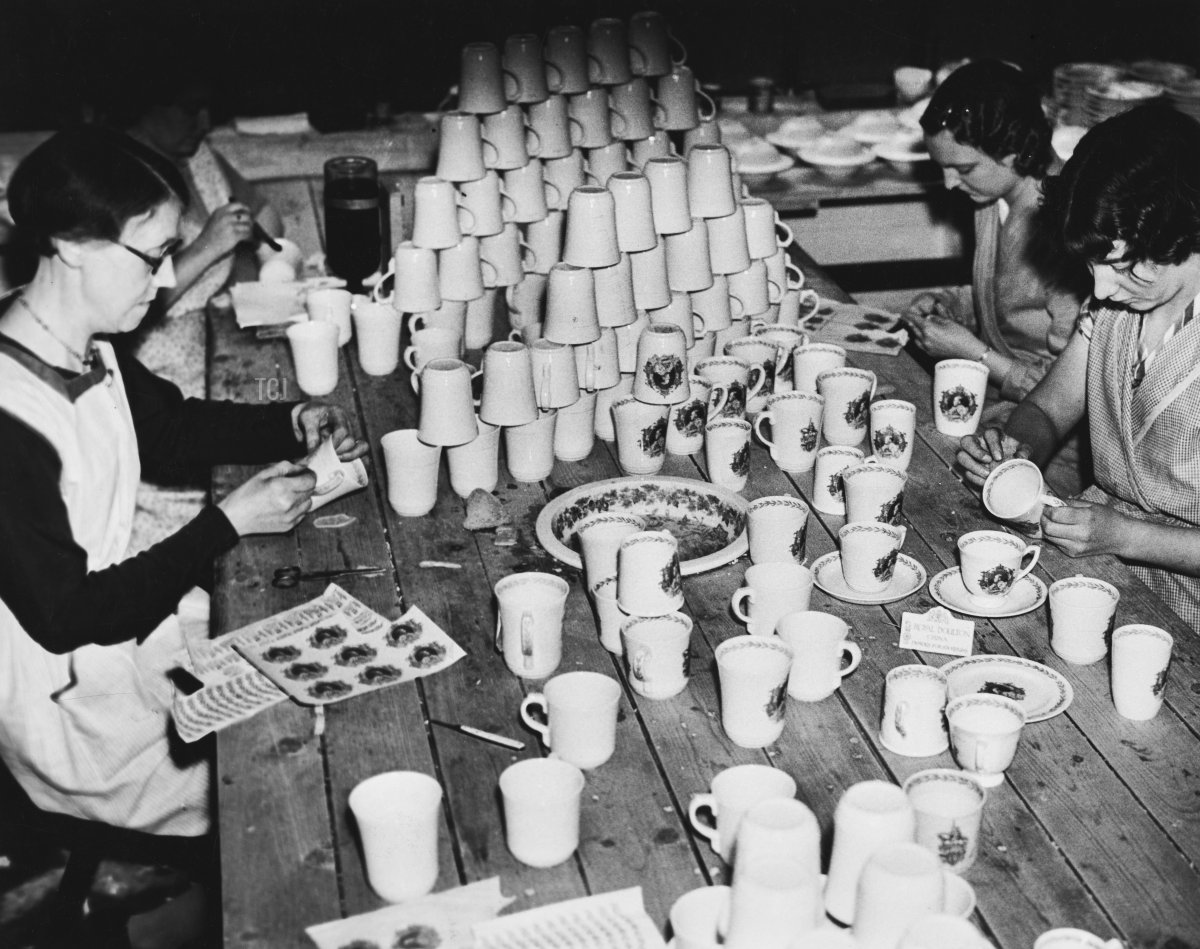
By the autumn of 1936, production of coronation souvenirs was already in full swing. While pottery, postage stamps, and coins were busily being manufactured, a constitutional crisis was brewing. Edward wanted to marry Wallis, but her previous two marriages were an obstacle that couldn’t be overcome in 1936. If he decided to go ahead with the marriage, the government would resign, damaging the monarchy’s constitutionally neutral status. In December 1936, less than a year after his accession, Edward made the decision to abdicate the throne. In his radio broadcast following the abdication, the new Duke of Windsor told the British public that he couldn’t continue to do his job without the support of “the woman I love.”
Privately, government officials and courtiers were relieved. Many had been concerned for years that Edward was not going to be an effective monarch. Tommy Lascelles, the longtime palace staff member who had served as Edward’s assistant private secretary, had told Prime Minister Stanley Baldwin in the 1920s, “I can’t help thinking that the best thing that could happen to him, and to the country, would be for him to break his neck.” Even King George V had lacked confidence in Edward’s fitness for the job, famously stating, “I pray to God my eldest son will never marry and that nothing will come between Bertie & Lilibet and the throne.”
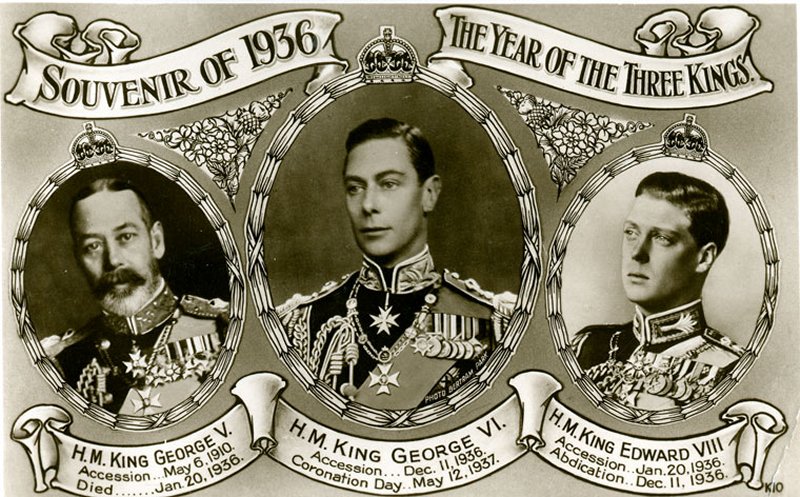
Bertie was indeed the next man in line after his elder brother. The Duke of York was the second son of King George V and Queen Mary. He had married a Scottish aristocrat, Lady Elizabeth Bowes-Lyon, in 1923, and they had two daughters, Princess Elizabeth and Princess Margaret. Edward had continued to cultivate a playboy image well into adulthood, while Bertie had settled down and established a happy nuclear family. Everything changed, though, when Edward abdicated. The heavy mantle of monarchy settled uneasily on Bertie’s shoulders. To try to reassure the public during the upheaval of the abdication, Bertie took on the regnal name of King George VI, an attempt to draw a smooth line between his father’s reign and his own.
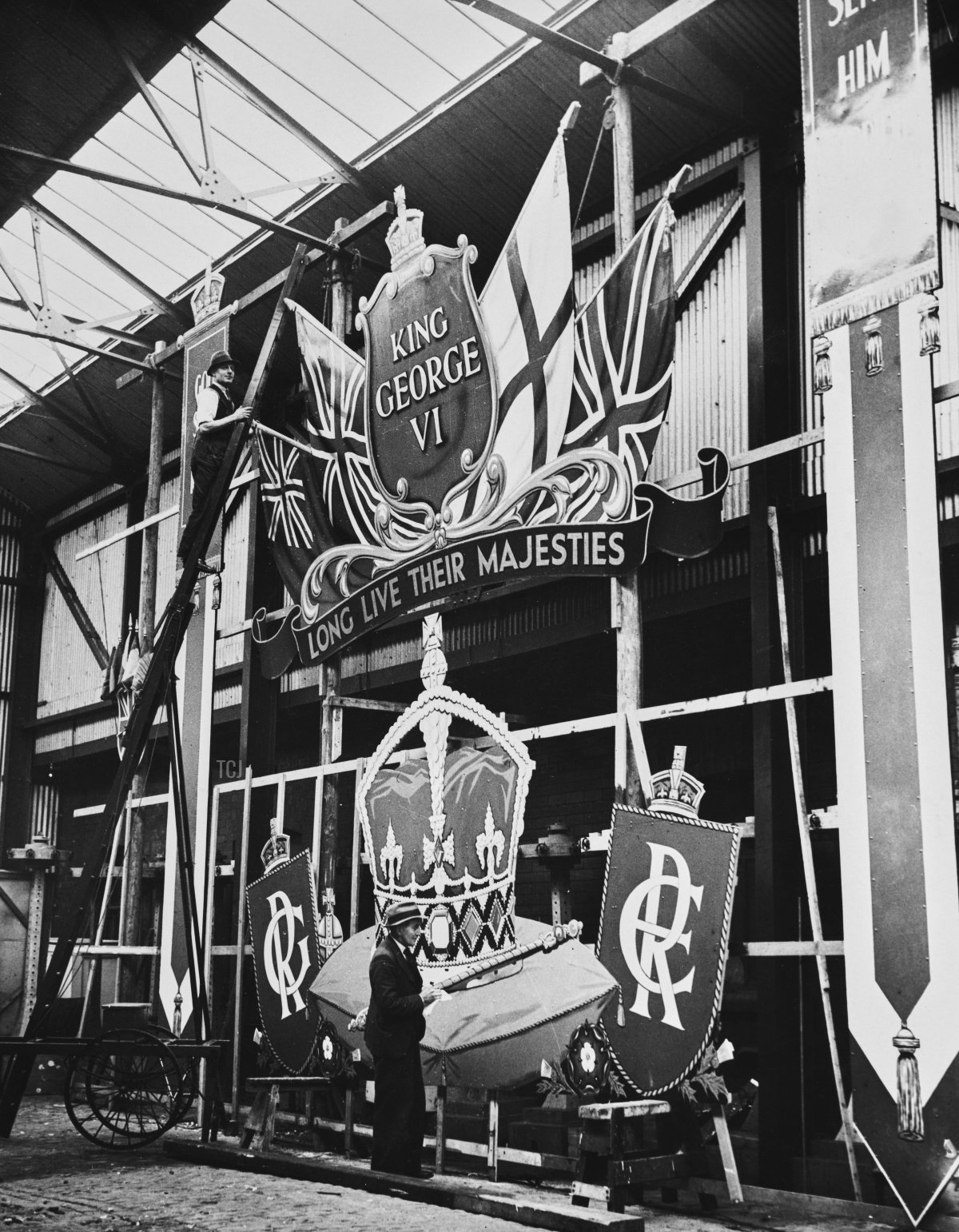
The abdication meant that most of the coronation plans drawn up for Edward VIII had to be scrapped—but not all of them. It was decided that King George VI and Queen Elizabeth would be crowned at Westminster Abbey on May 12, 1937, the same date that had been reserved for Edward VIII’s coronation. In the spring of 1937, the country began putting up decorations and selling souvenirs for the new King and Queen’s coronation instead. The elaborate display pictured above was part of the decorations on the promenade in the resort town of Blackpool.
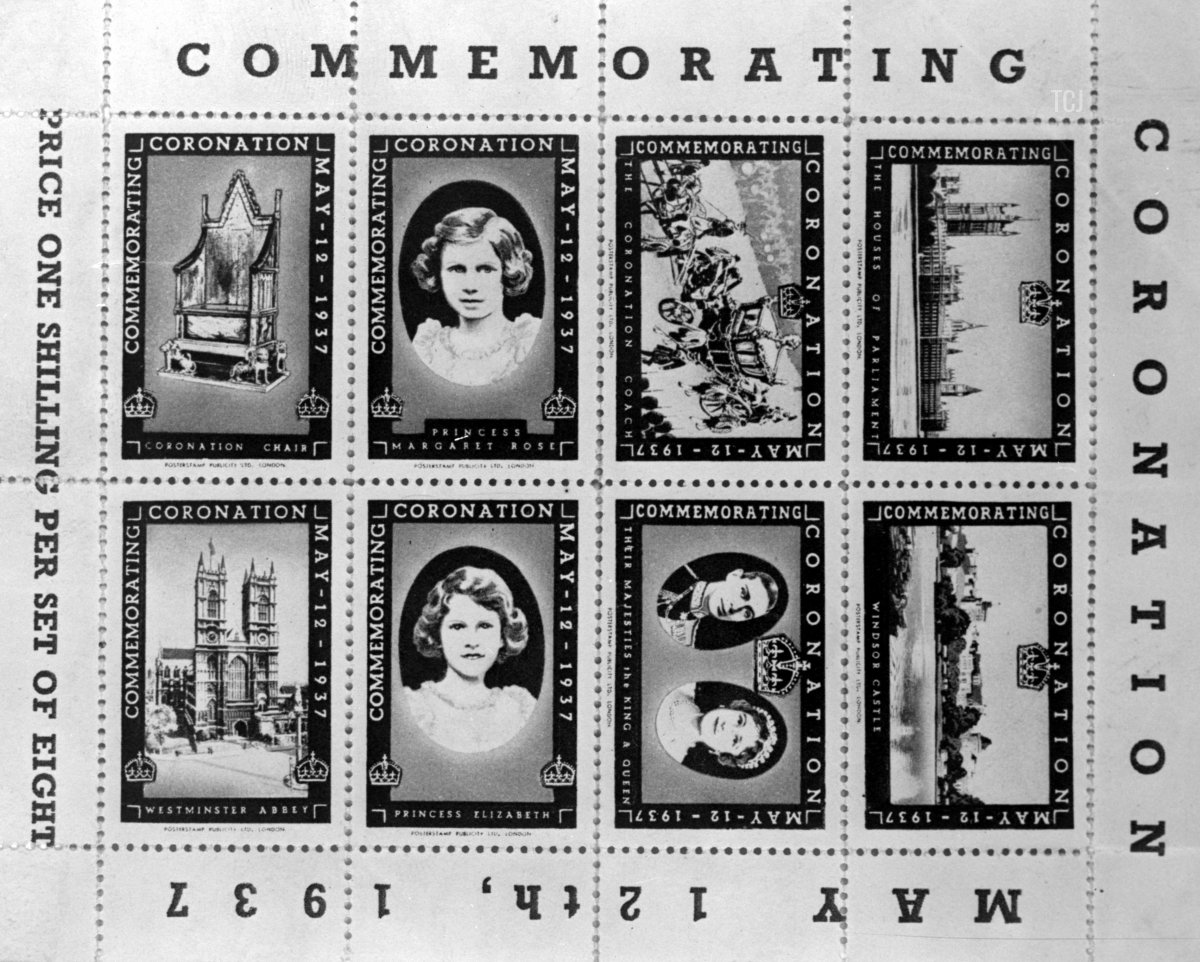
Commemorative stamps were produced ahead of the ceremony as well. This series features images of the new monarch, his wife, and their children, as well as Westminster Abbey, the Coronation Chair, the Gold State Coach, the Houses of Parliament, and Windsor Castle.
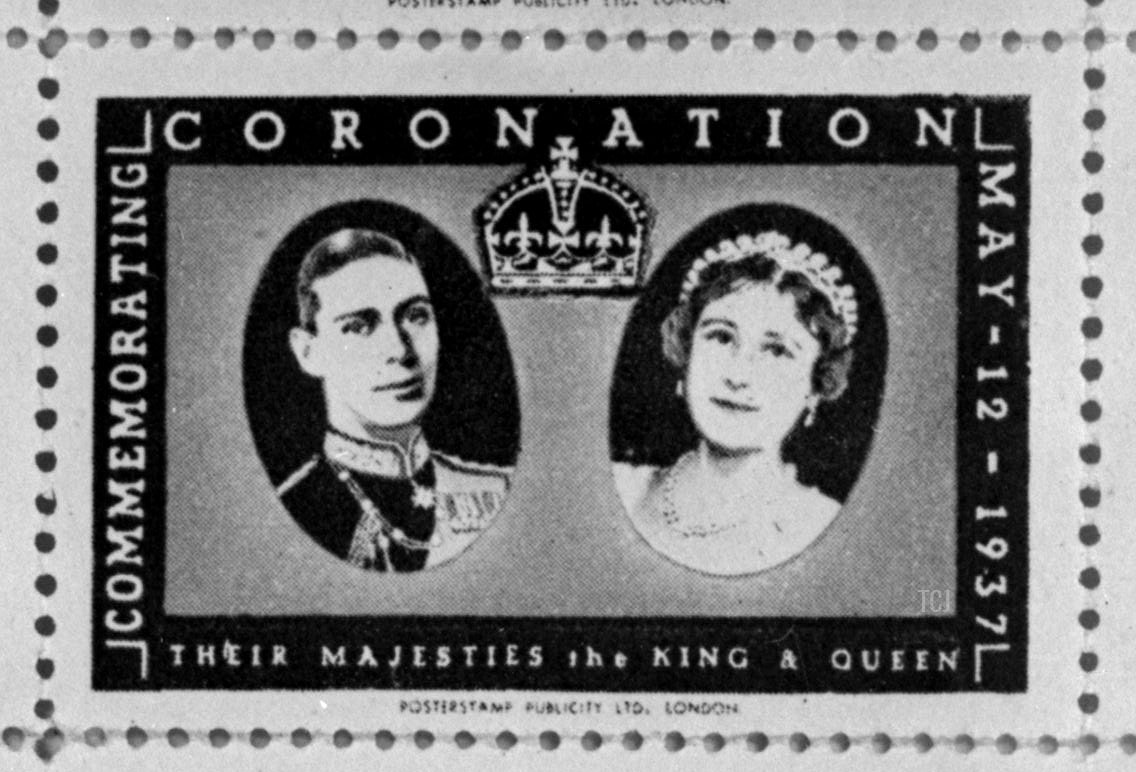
The picture of the new Queen Elizabeth used on the stamp, interestingly, features one of her newer pieces of royal jewelry. The diamond halo tiara, with its Art Deco-inspired scroll design, was purchased from Cartier by George VI and given to his wife as a present in November 1936, shortly before the abdication. Today, the world probably knows it best as the tiara that Kate Middleton wore to marry Prince William in 2011.
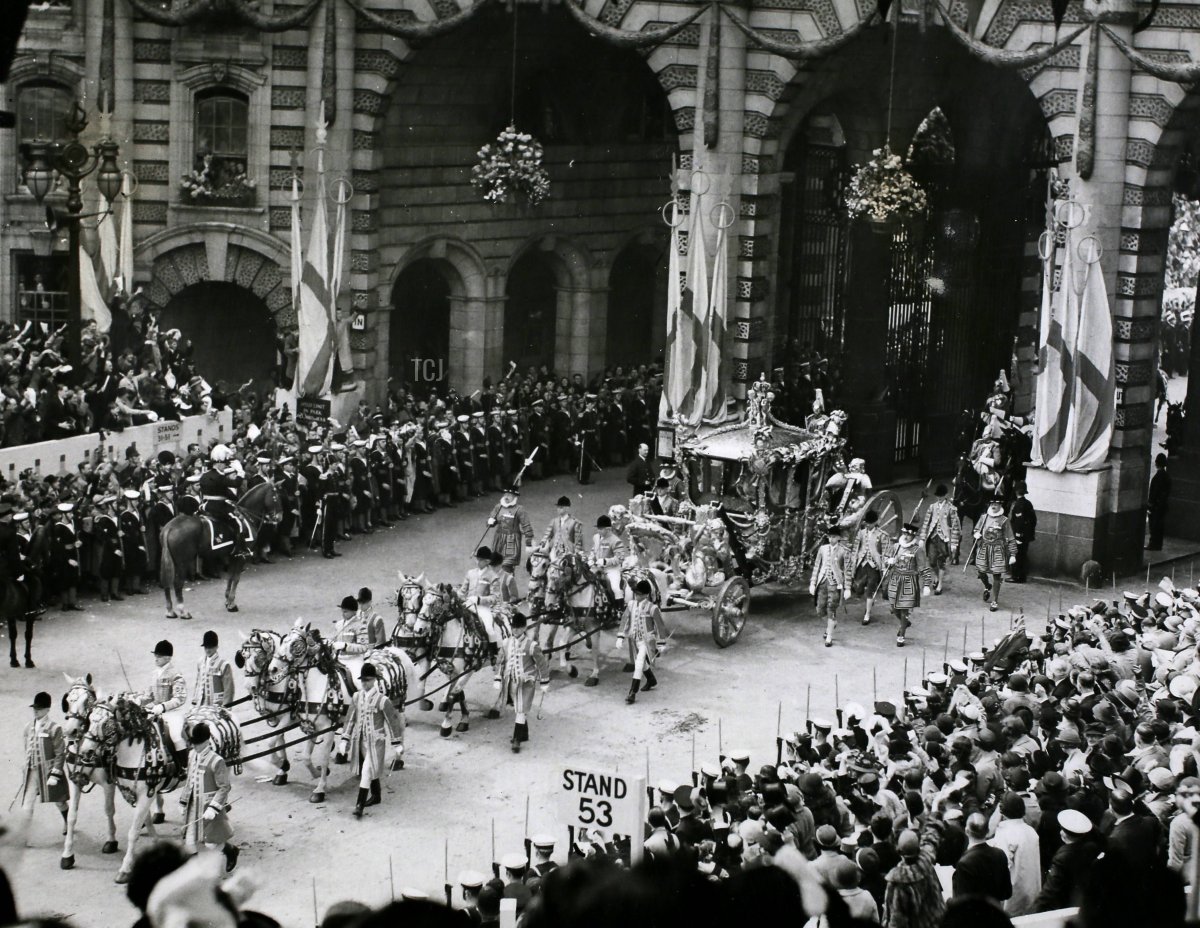
Coronation Day dawned on Wednesday, May 12, 1937. For the first time, television cameras were able to capture the coronation procession as the King and Queen traveled in the Gold State Coach from Buckingham Palace to Westminster Abbey. The entire coronation, both the procession and the ceremony, was broadcast on the radio, and film cameras captured newsreel footage from within the Abbey walls as well.
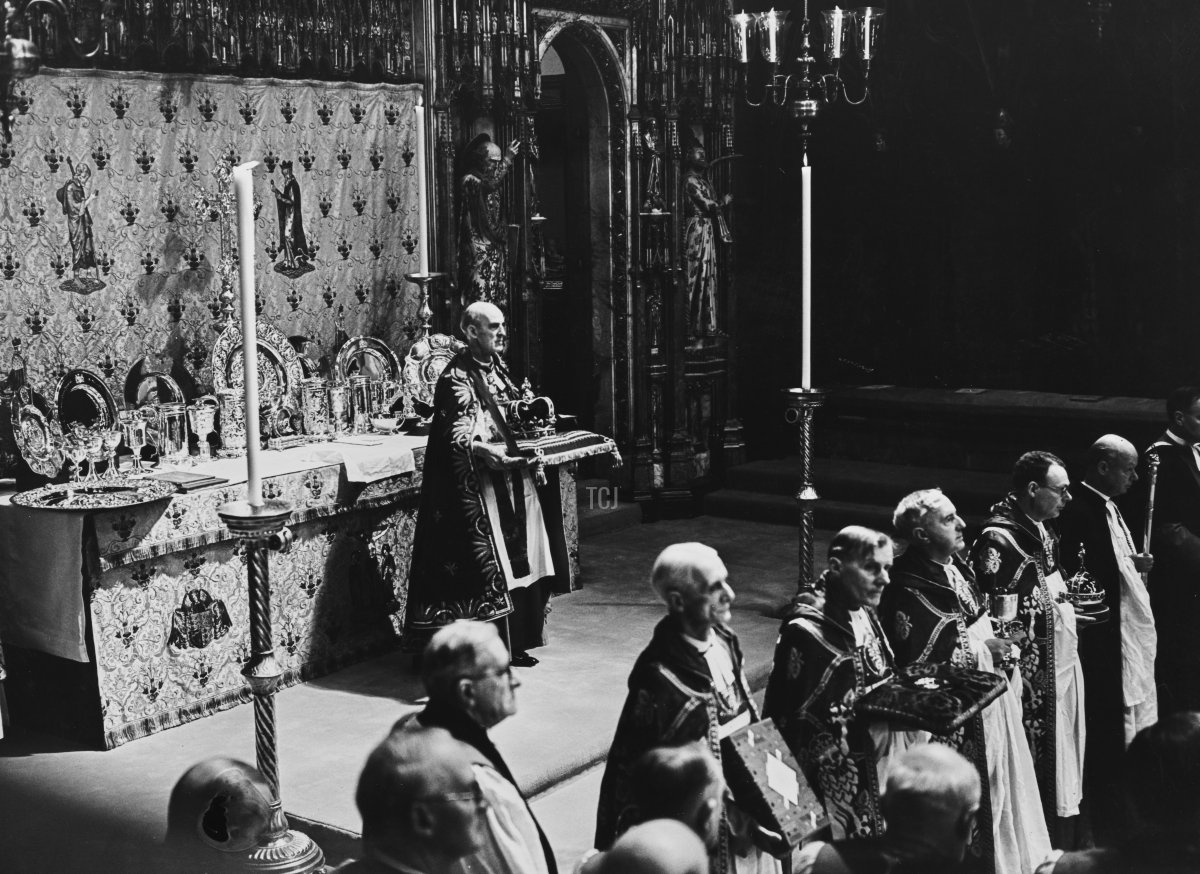
Inside the Abbey, the regalia arrived in a grand procession. Above, the Dean of Westminster, William Foxley Norris, carries St. Edward’s Crown on a cushion after it had been brought in to the Abbey by the Marquess of Salisbury.
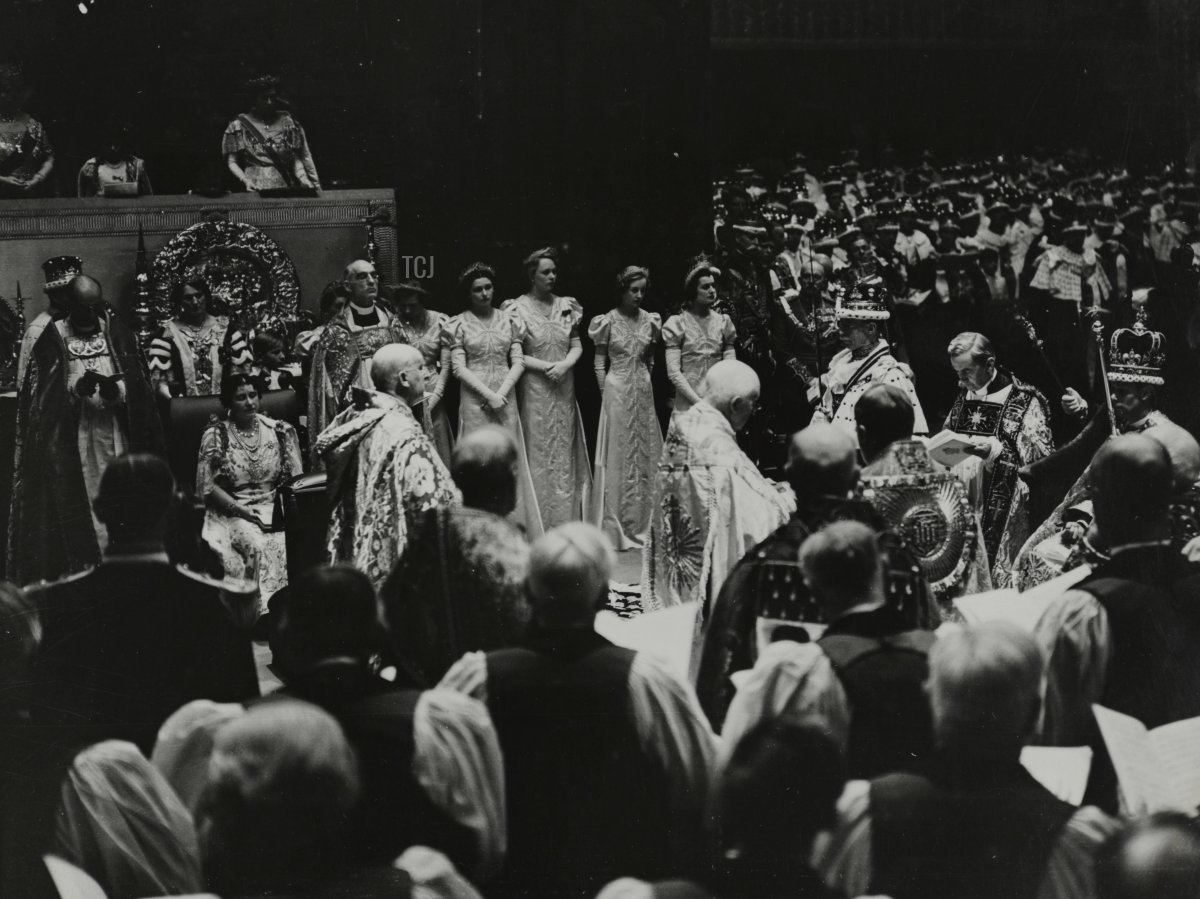
Members of the royal family, including Princesses Elizabeth and Margaret, processed in to the Abbey shortly after ten o’clock that morning. The King and Queen’s procession arrived sharply at eleven. Archbishop Cosmo Lang conducted the service that followed, which lasted two and a half hours after the arrival of the monarch and his consort.
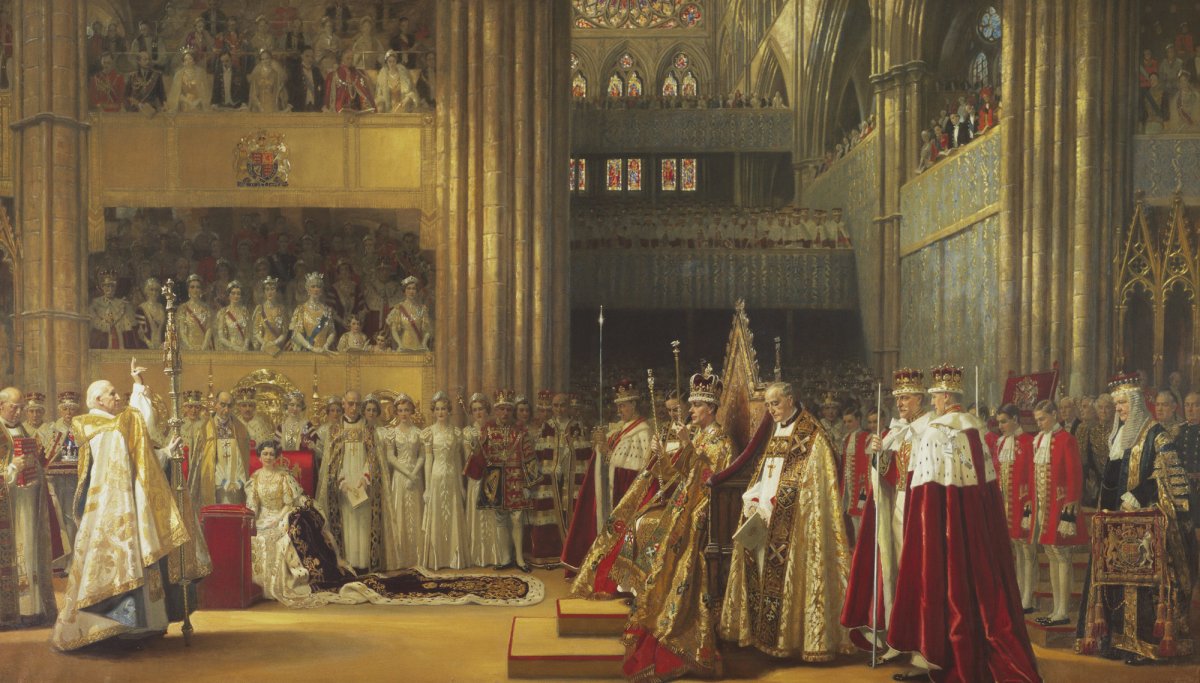
Lang anointed and crowned both King George VI and Queen Elizabeth during the service. The ceremony was filmed and photograph, but following royal tradition, it was also captured on canvas. This painting, by the English artist Frank O. Salisbury, depicts the Archbishop blessing the King, who wears St. Edward’s Crown following his crowning.
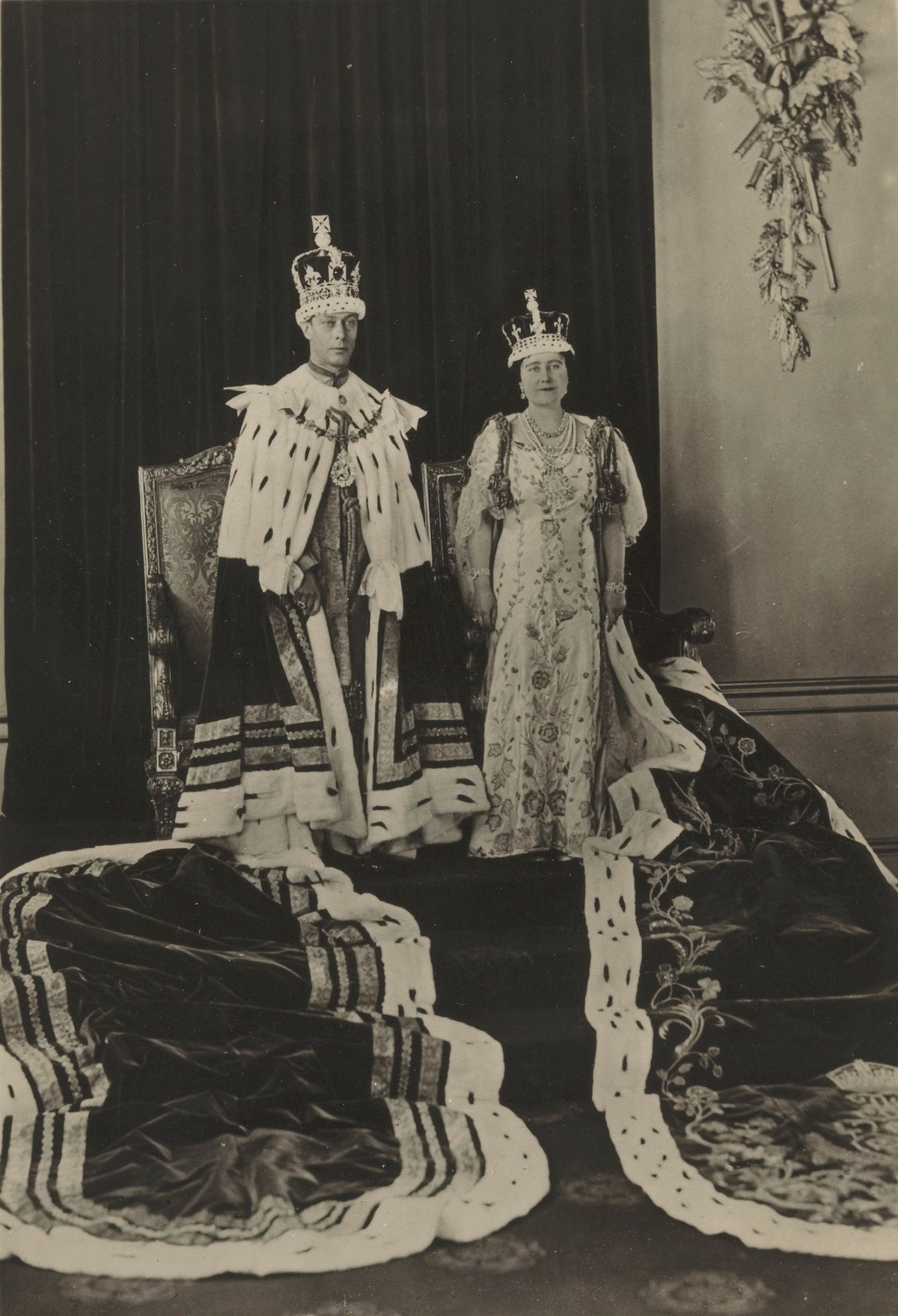
Both George and Elizabeth wore elaborate crowns and robes during the ceremony. Like his father before him, George VI was crowned with St. Edward’s Crown but wore the Imperial State Crown for his departure from the Abbey and for the portraits taken afterward. That crown was based on the previous 1838 Imperial State Crown that had been made for the coronation of his great-grandmother, Queen Victoria, but in 1937 a new frame was constructed to house the precious gemstones set in the crown.
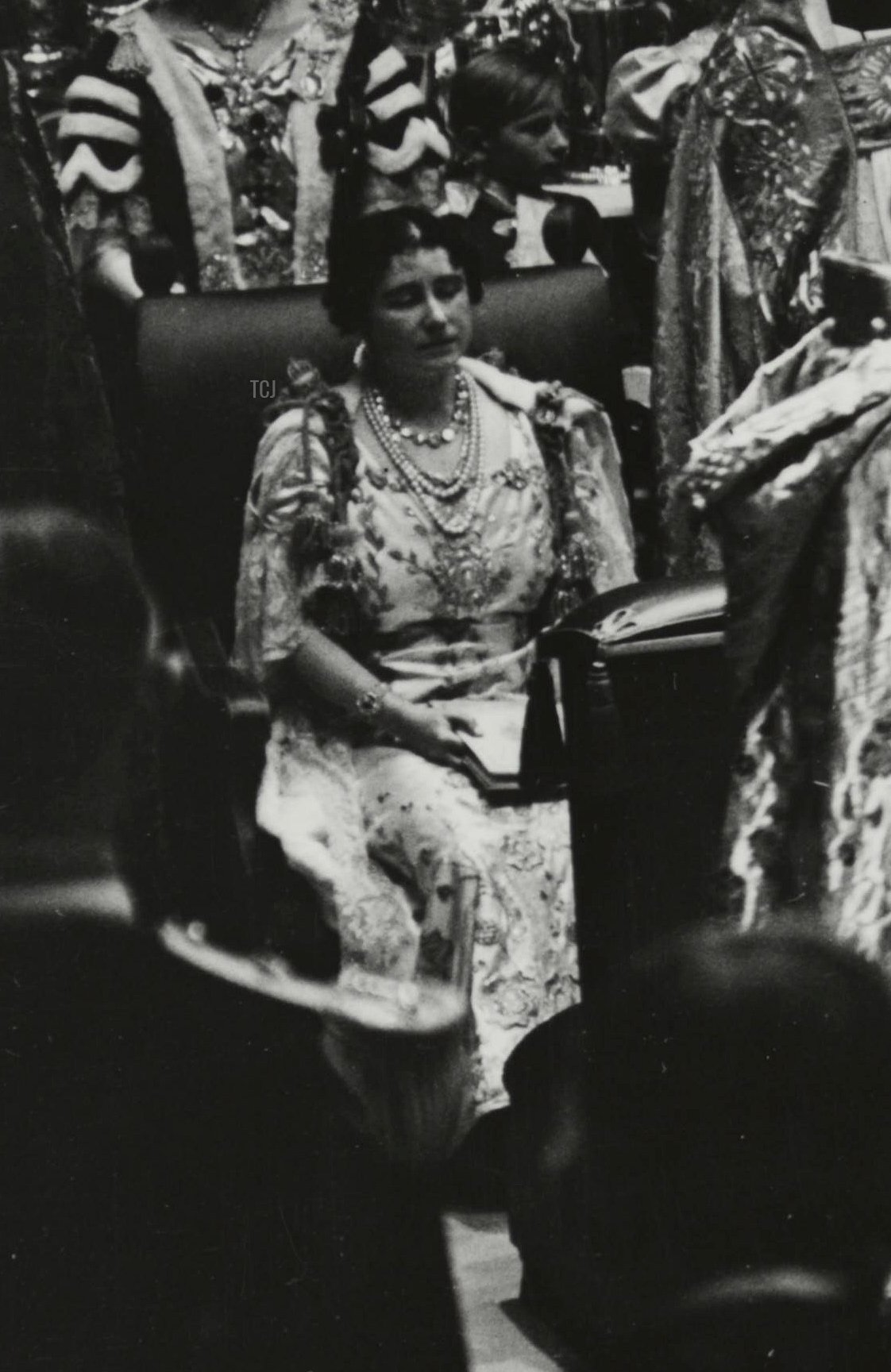
But we’re really here to talk about jewelry worn by the other person in the spotlight at the coronation: Queen Elizabeth, who we know better today as the Queen Mother. Following in the footsteps of Queen Alexandra and Queen Mary, she wore an elaborate embroidered gown and dazzling royal jewels for the service, but she arrived bare-headed, as you can see in this photograph from the coronation ceremony before her crowning.
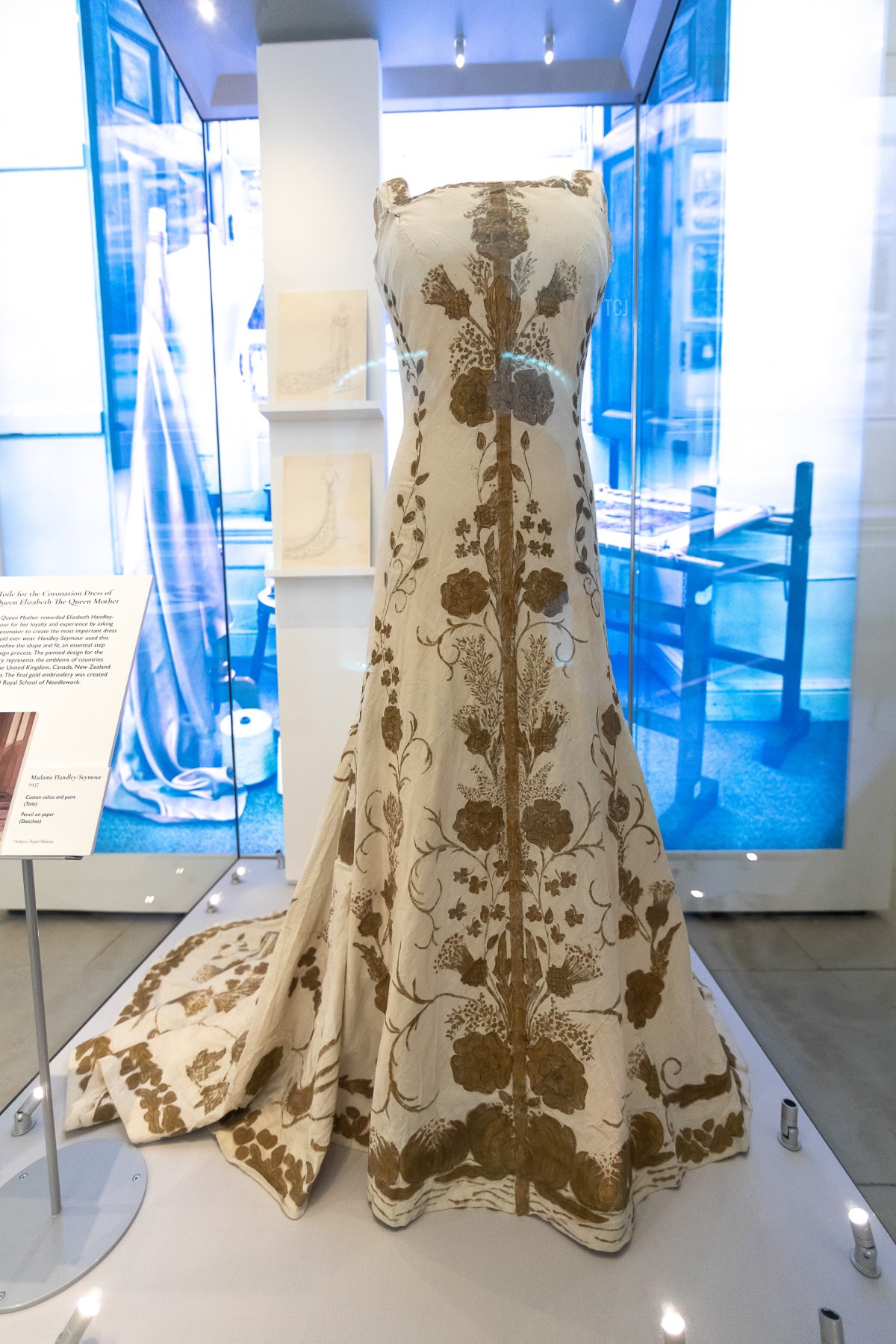
The silk satin gown that Elizabeth wore for the coronation was made by Elizabeth Handley-Seymour, the London-based couturier who had also made Elizabeth’s wedding dress in 1923. The photograph above shows a rare surviving toile from the process, a full-size working pattern that allowed the designer and sewers to test the fit of the gown before making a final version. The toile is decorated with the patterns that would be embroidered in golden thread. The emblems on the gown were largely floral, including national symbols like the English rose, the Scottish thistle, and the Irish shamrock. Numerous floral symbols from the Commonwealth (then still the Empire) were also embroidered on the gown, including the Indian lotus flower and the South African protea.
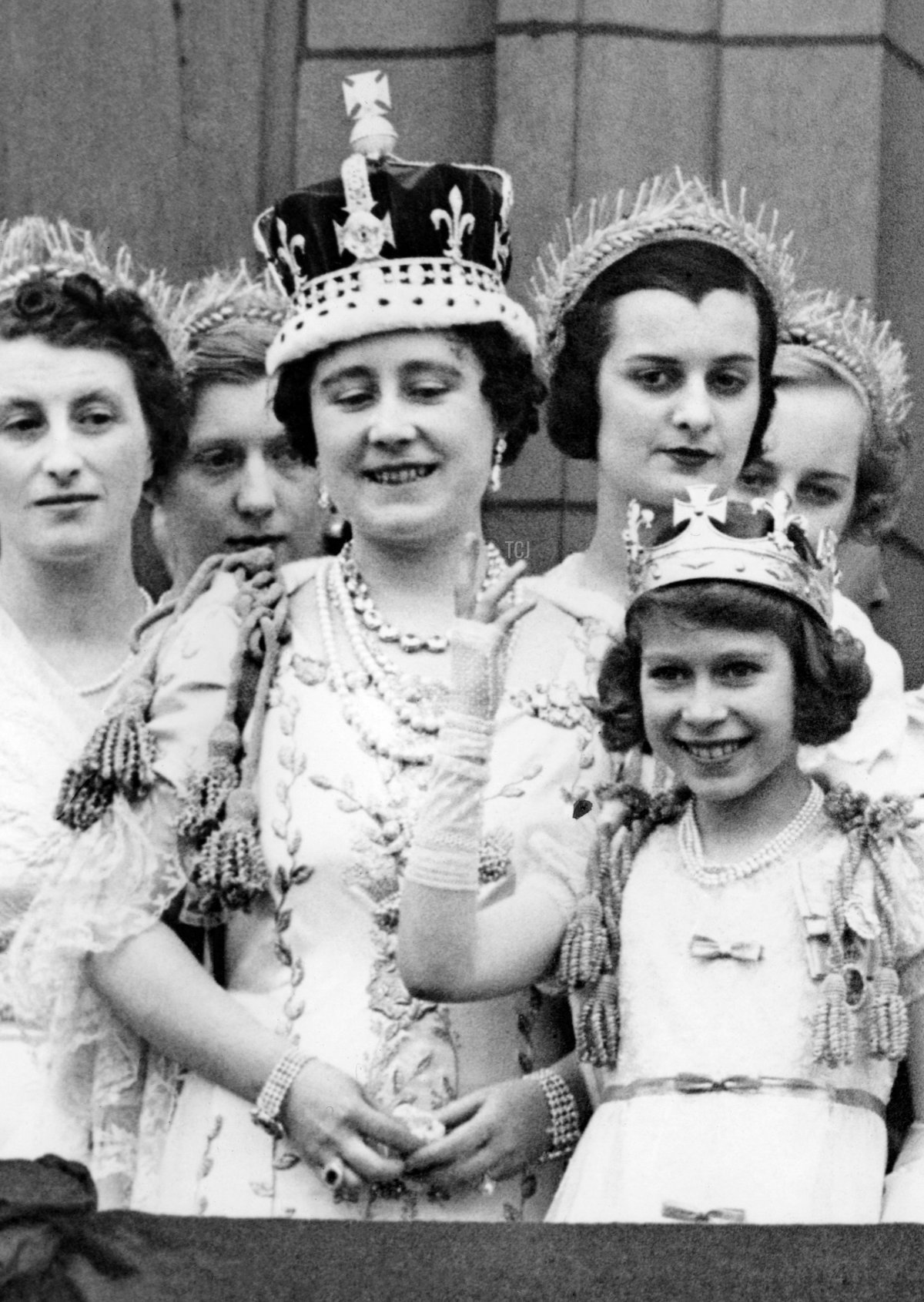
The crown that was used for her coronation was made especially for the occasion by the crown jeweler, Garrard. The Royal Collection describes the design of the crown: “The crown has a platinum frame set with 2,800 diamonds, mainly cushion-shaped but with some rose-cut and some brilliant-cut. The band, comprising alternating clusters formed as crosses and rectangles, is bordered with single rows of brilliant-cut diamonds and set at the front with a large diamond, which was given to Queen Victoria in 1856 by the Sultan of Turkey. Above the band are four fleurs-de-lis and four crosses-pattée. The front cross holds the Koh-i-nûr diamond in a detachable platinum mount.”
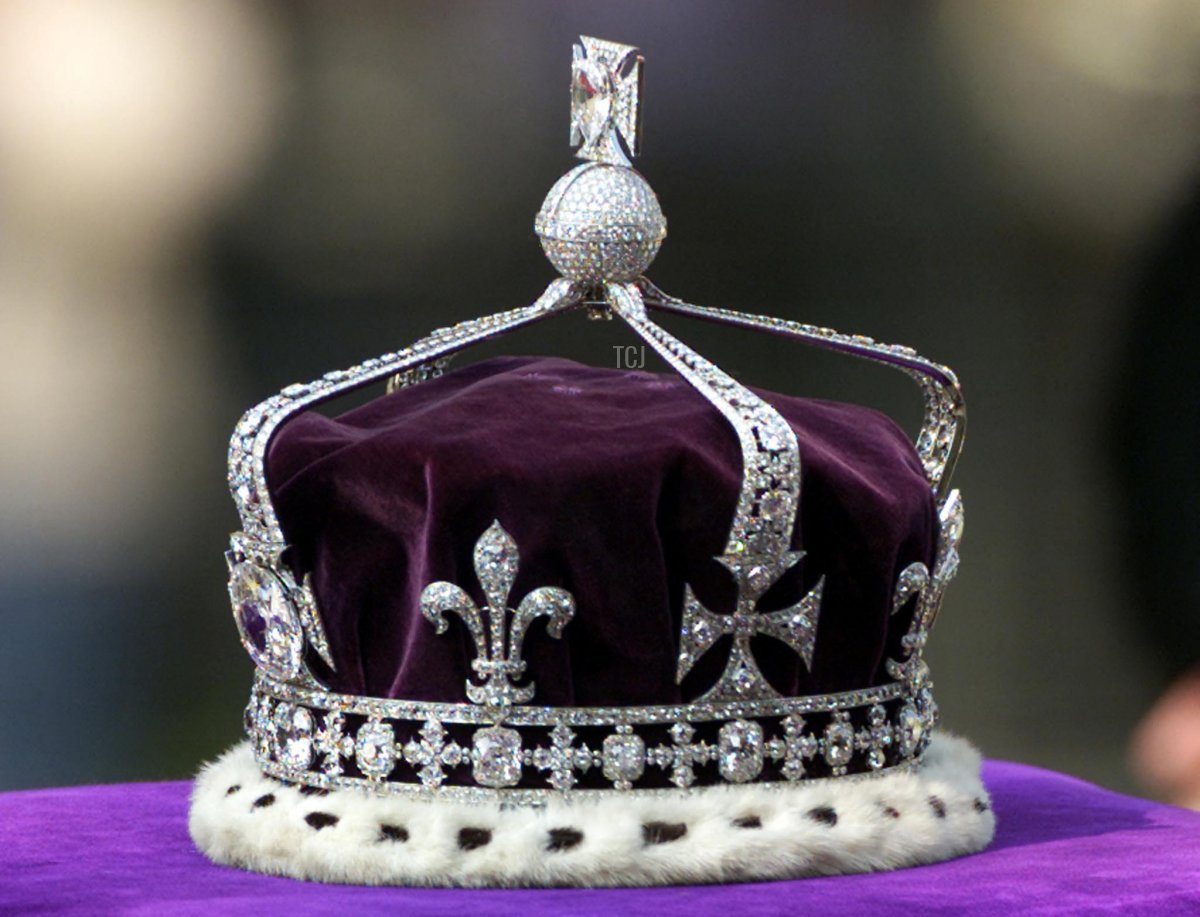
The cross that sits atop the crown’s monde was set for the coronation with the Lahore Diamond, which is more usually worn as a pendant on the Coronation Necklace. Today, the real Koh-i-Noor Diamond remains set in this crown—which seems to be the primary reason that Queen Camilla chose not to wear it for her upcoming coronation—but a rock crystal copy is set in the place of the pear-shaped Lahore Diamond.
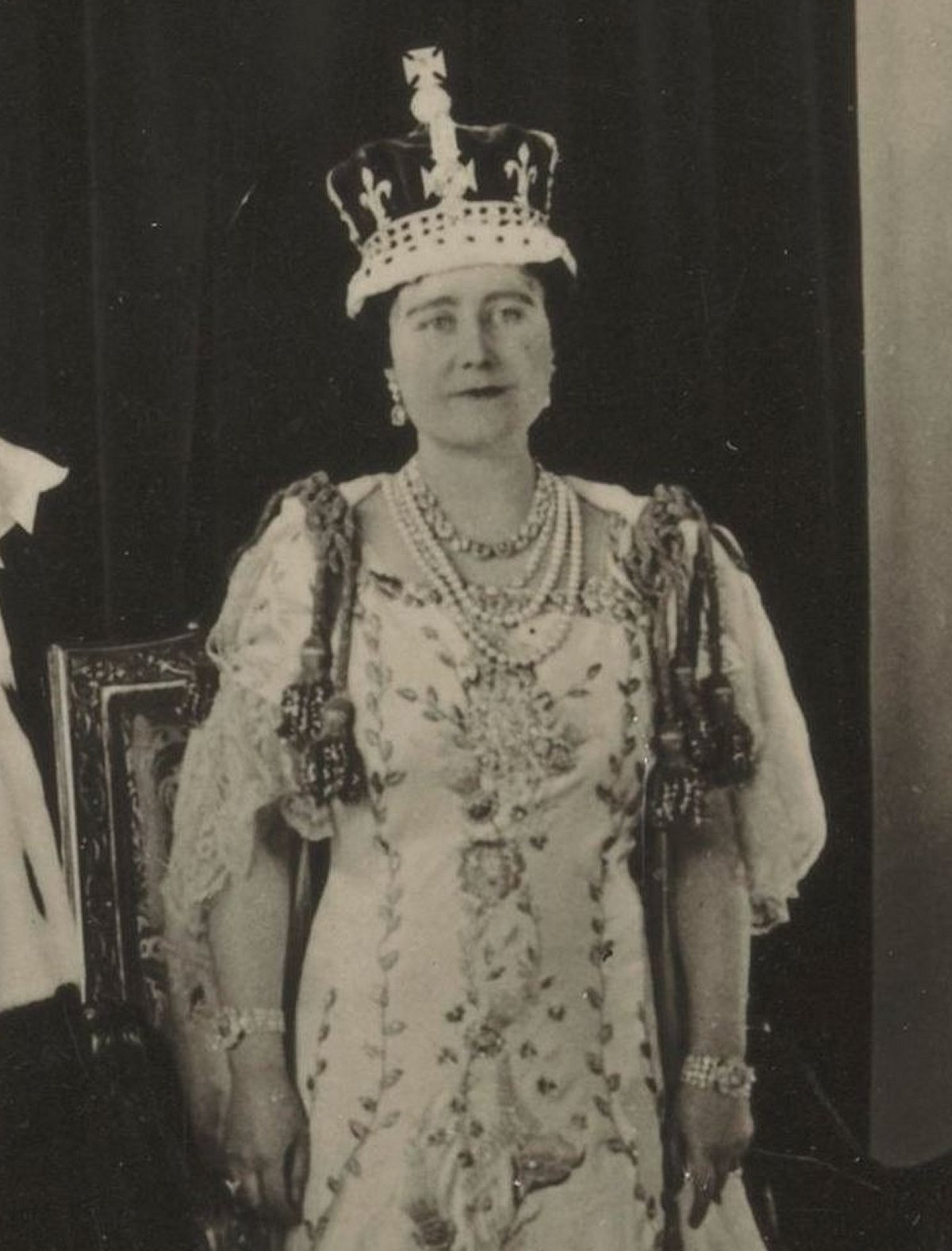
Queen Elizabeth largely followed the same coronation jewelry philosophy that Queen Mary had a quarter century earlier: earrings, several necklaces, brooches, and bracelets. She wore the diamond Coronation Earrings that had been made for Queen Victoria in the 1850s, plus the Coronation Necklace without its pendant (because that diamond was set in her crown). She also wore her own diamond coronation necklace, a gift from her husband, and two strands of pearls.
She pinned the centerpiece of the Cockade Brooch on the bodice of her gown, just as Queen Alexandra and Queen Mary had, though she left off the side sections that her predecessors had worn. She also pinned Queen Adelaide’s Brooch, one of the oldest jewels in the collection, at the left side of her neckline. She finished off the look with the same bracelets that had been worn by Queen Mary—two of Queen Victoria’s four-row diamond bracelets, worn with the clasps featuring the cyphers of King William IV and Queen Adelaide. On her right hand, she wore the ruby coronation ring made for Adelaide in 1831, and on her left, she wore her wedding ring with the pearl ring that she often wore in place of her original sapphire engagement ring.
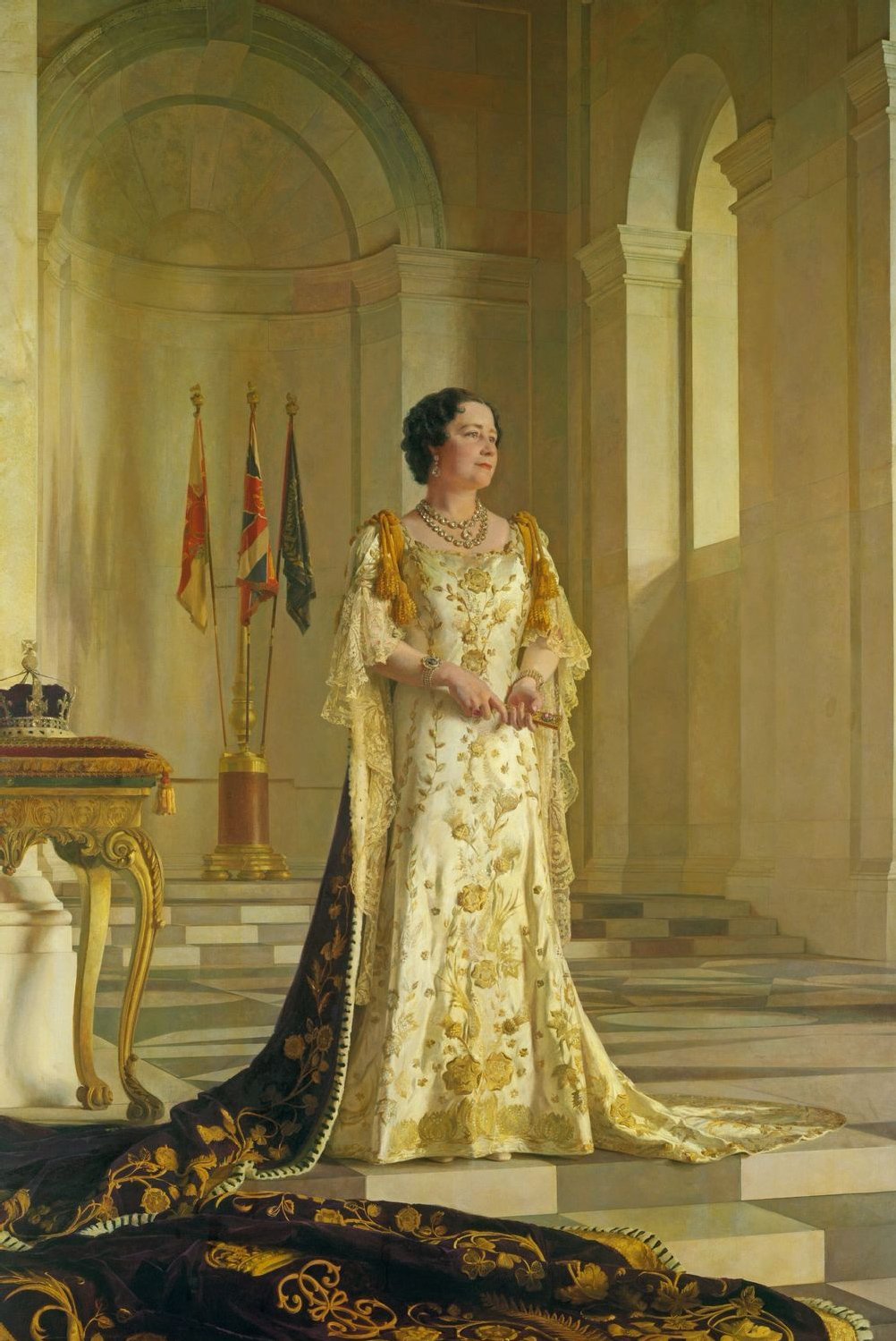
Elizabeth wore many of these jewels with her coronation gown and robe for her state portrait, painted by Gerald Kelly in 1938. You’ll spot the Coronation Earrings and Coronation Necklace (with its pendant this time), Elizabeth’s own Coronation Necklace, the diamond bracelets, and the Queen Consort’s Coronation Ring. Elizabeth also holds another royal treasure. It’s almost certainly Queen Alexandra’s Coronation Fan, a tortoiseshell and diamond piece made for Alexandra in 1902. Both sides of the fan feature trailing diamond flowers; one side also includes Alexandra’s cypher, topped by a crown of diamonds and rubies. Queen Mary gave the fan to Elizabeth two days before the 1937 coronation, with the following note: “For darling Elizabeth in remembrance of Coronation Day 12th May 1937, from her loving mama Mary. This fan formerly belonged to Queen Alexandra.”
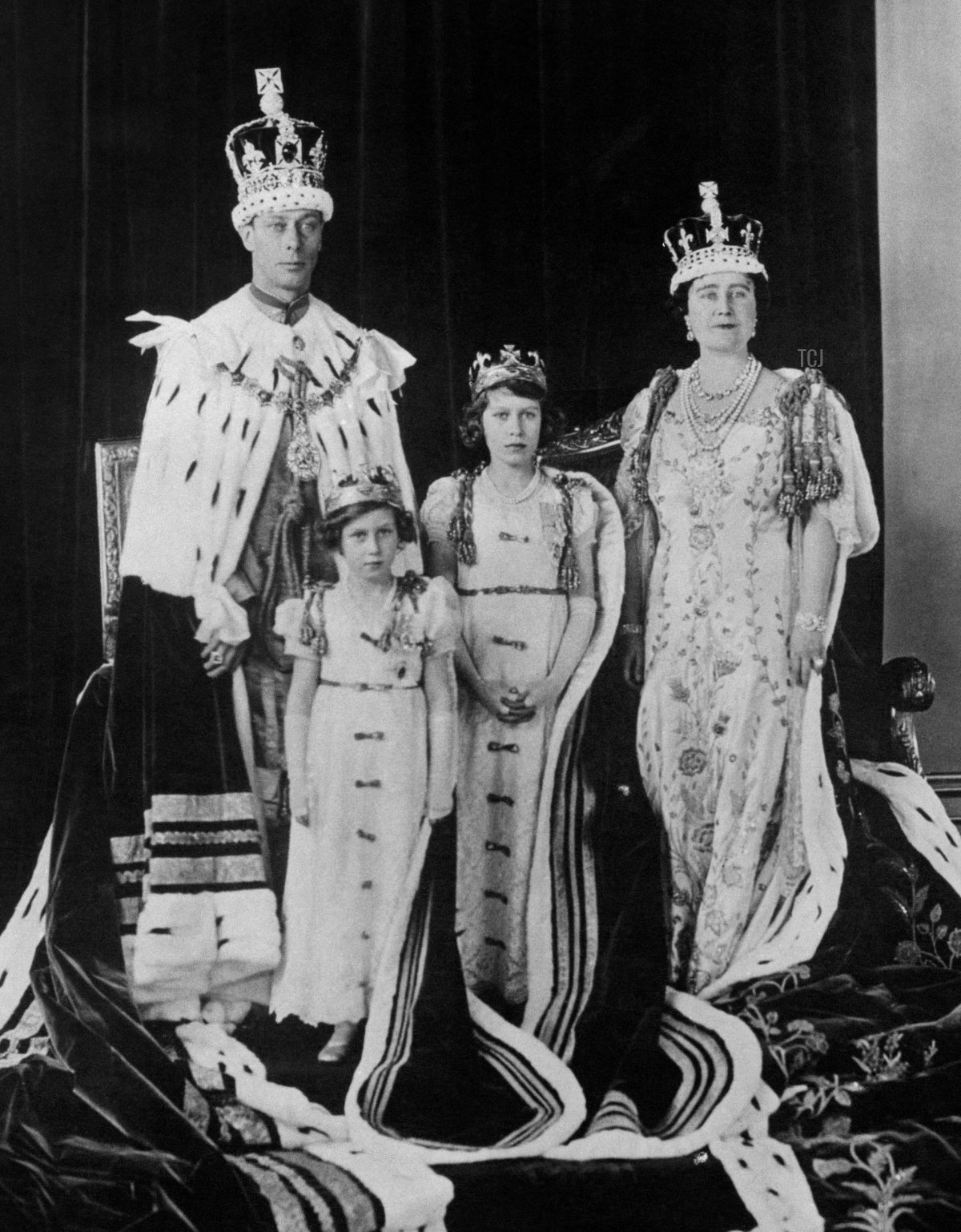
The King and the Queen posed in their coronation finery for several portraits on the day, including this picture with their daughters, Princess Elizabeth and Princess Margaret. The girls wore special silver-gilt coronets that had been made for them by Garrard. They also wore pearl necklaces that had been given to them in 1935 by their grandfather, King George V, as a Silver Jubilee present. Elizabeth’s necklace had three rows of pearls, while Margaret’s had two.
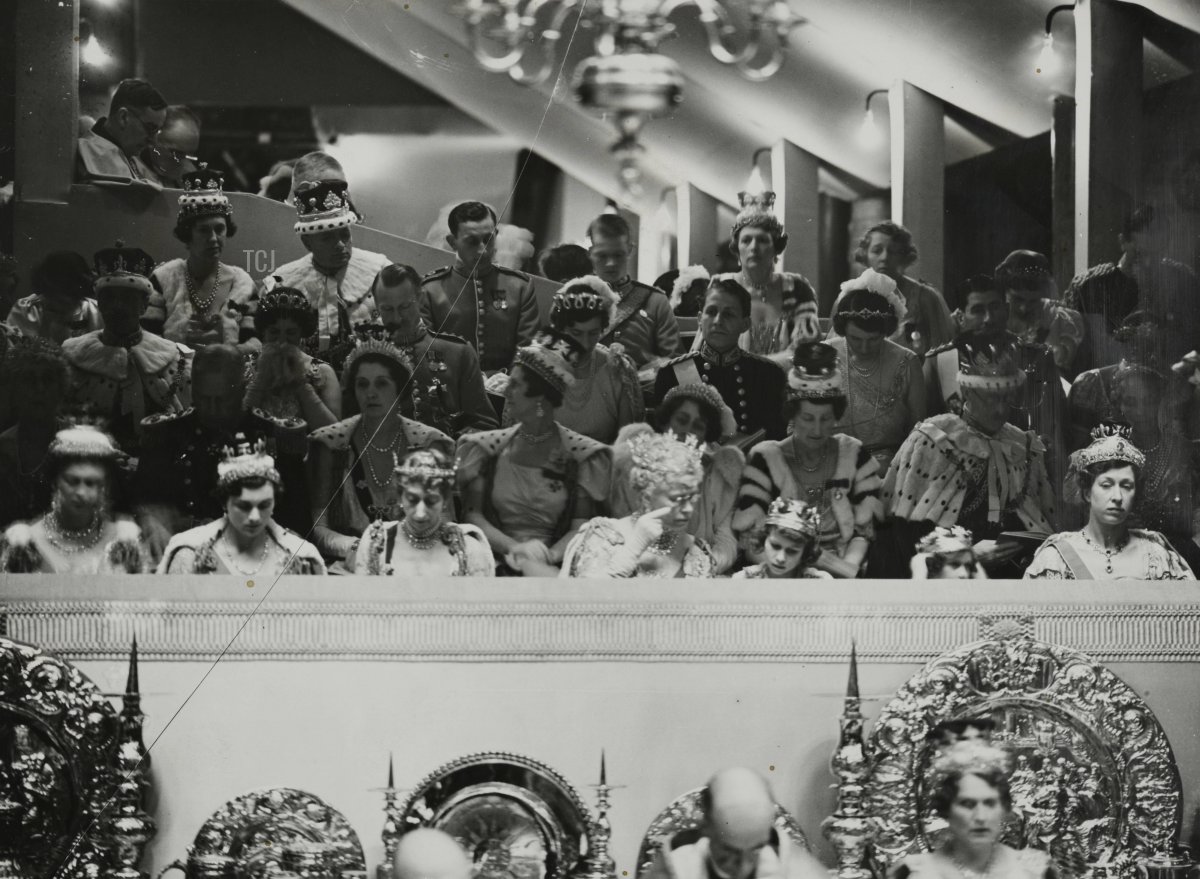
The young princesses watched the coronation from the royal box with their grandmother, Queen Mary, and their aunt, the Princess Royal. Also in the royal box were numerous other relatives, including Queen Maud of Norway, the Duchess of Gloucester, and the Duchess of Kent. The girls’ maternal grandparents, the Earl and Countess of Strathmore, were there, too.
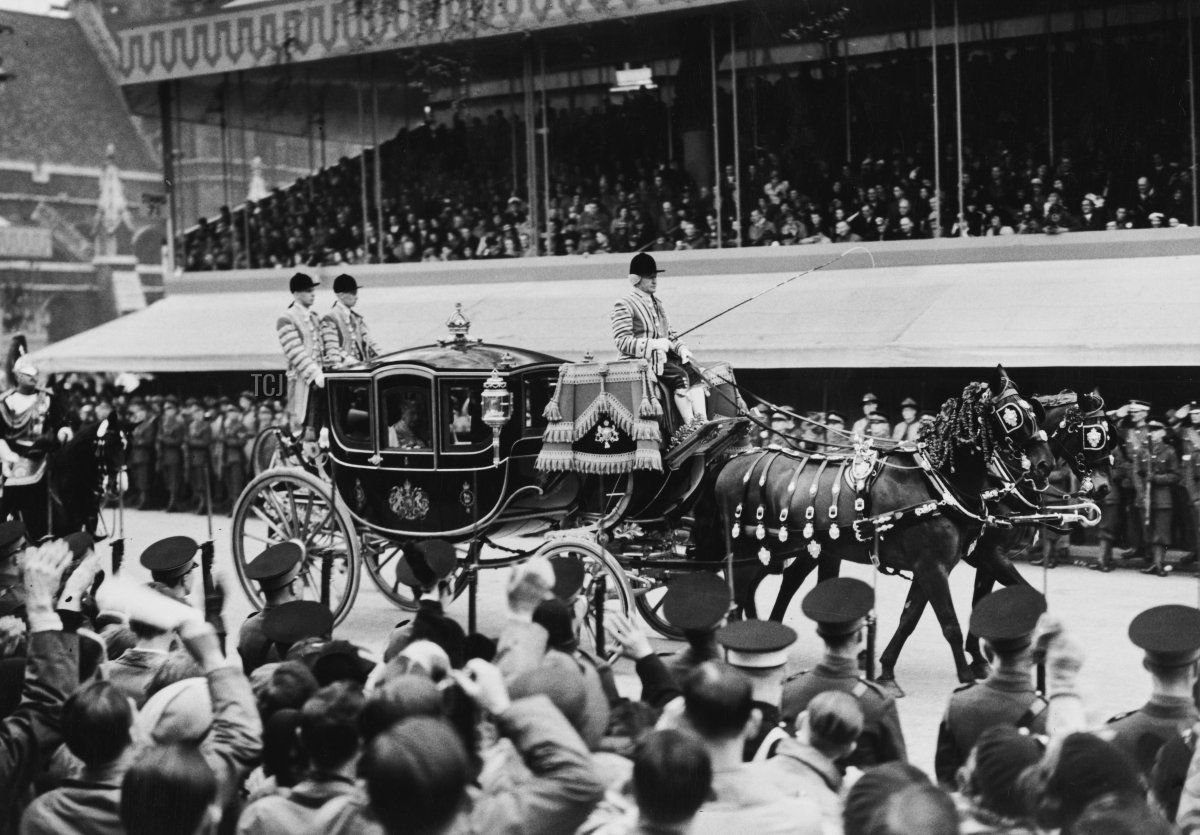
Queen Mary and her sister-in-law, Queen Maud, rode together in Queen Alexandra’s State Coach during the coronation procession. Their presence at the ceremony was a break from tradition. In the past, others who had been crowned did not attend coronations as a rule. But in 1937, Mary decided to attend as a gesture of support to her son, and an extra show of confidence in him in the wake of the abdication. (There were reports published that January indicating that she had planned to attend the coronation of Edward VIII as well, if it had happened, to support her elder son.)
Newspapers reported that Maud had simply decided to accompany Mary to the coronation “as an English princess” rather than in her role as Queen Consort of Norway. (Her son and daughter-in-law, Crown Prince Olav and Crown Princess Märtha, represented King Haakon VII at the ceremony, which took place just a few months after the birth of their son, Harald, who is now the current Norwegian monarch.)
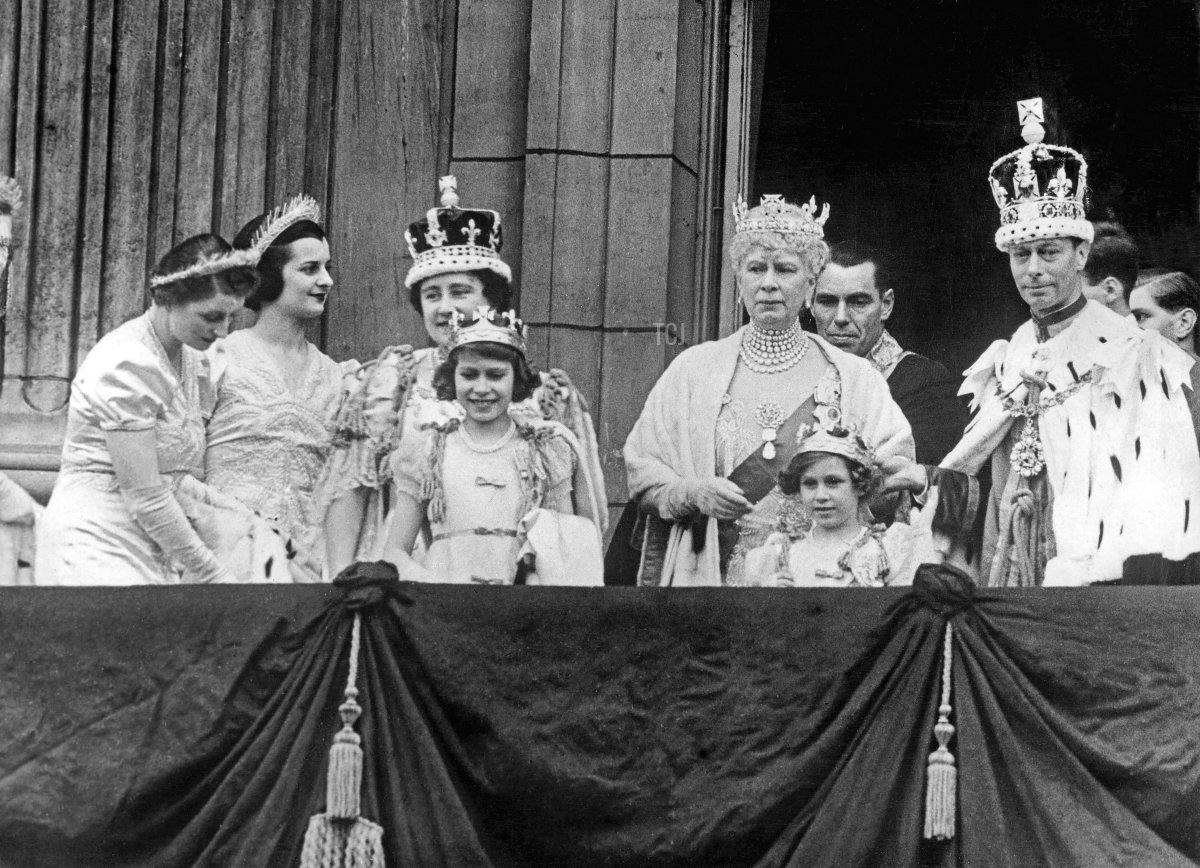
Queen Mary also appeared with the King, the Queen, and the princesses on the balcony of Buckingham Palace after the ceremony at the Abbey. She wore her own coronation crown without its arches and with the Cullinan V Brooch in place of the Koh-i-Noor Diamond. Her other jewels included her trademark “turtleneck” of diamond necklaces, plus the Cullinan III & IV Brooch and her Chain Link Bracelets.
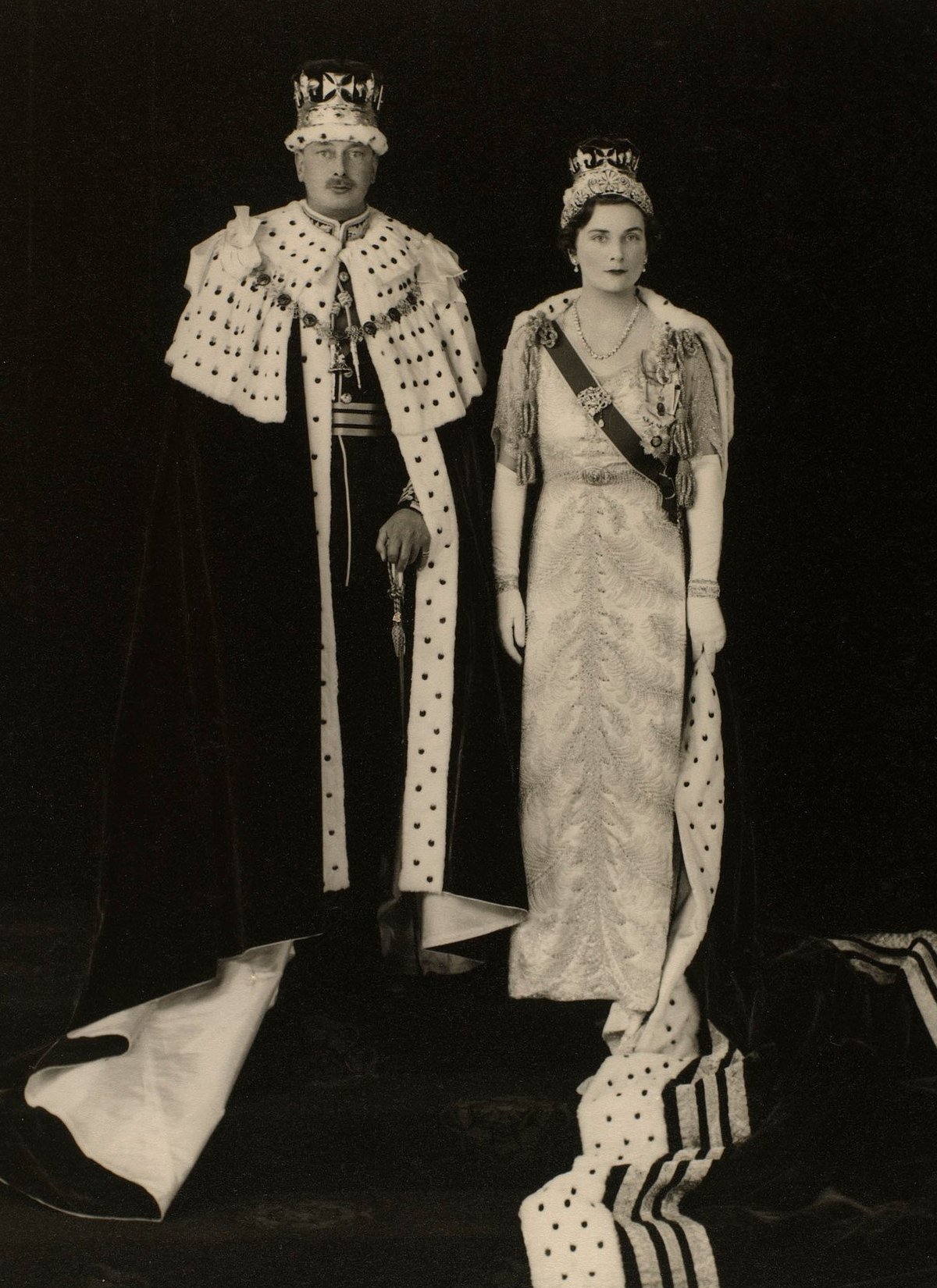
There were loads of tiaras on display. Here’s the Duchess of Gloucester wearing the all-diamond version of Queen Mary’s Honeysuckle Tiara. Her diamond necklace, plus the large brooch with pendants pinned to her bodice, were part of a suite of jewelry given to her as a wedding present in 1935 by King George V and Queen Mary.

And here are the Duke and Duchess of Kent on Coronation Day. Marina wears the Kent City of London Fringe Tiara, which now belongs to Prince and Princess Michael of Kent. Her diamond girandole earrings date to the eighteenth century, and her large diamond ribbon brooch comes from the nineteenth-century court of the Romanovs. Both were later sold by her son and daughter-in-law, the present Duke and Duchess of Kent.
Leave a Reply
You must be logged in to post a comment.